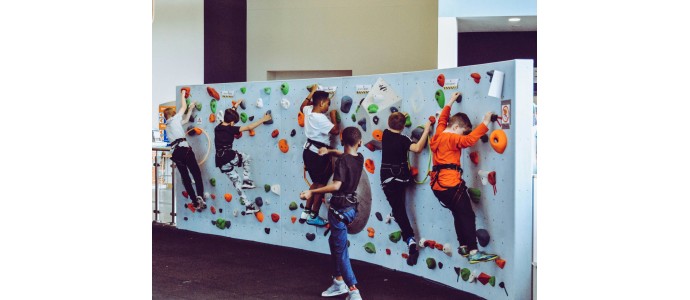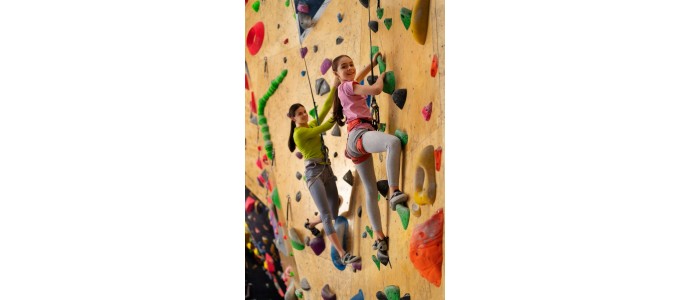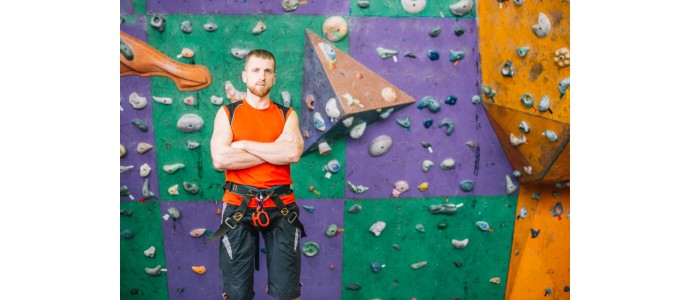Grip types of climbing holds.
Knowing different types of holds grips in climbing is essential for any climber, from beginners to experts. Grip types not only determine the difficulty of a route, but also directly influence the technique and strategy needed to climb safely and efficiently.
Classification of grip types
In climbing, it is essential to know the different types of hold grips to adapt to the various routes and improve technique. The main classifications of grips, from the most basic to the most advanced, are presented below.
Basic grips
Jugs
Description: The ladle type grips are large and deep, allowing the hand to close comfortably around hold.
Usage: They are ideal for beginners due to their ease of grip and also used on long routes to allow moments of rest.
Benefits: They provide great support and are easy to grip, which reduces fatigue and allows climbers to regain strength.
Slopers
Description: Slopers are rounded surfaces with no defined edges.
Usage: Require good balance and technique to take advantage of the friction of the palm and fingers.
Benefits: They challenge body control and friction force, being ideal for improving climbing technique and body control.
Technical grips
Pinch
Description: This type of grip is done with the fingers on one side and the thumb on the other, similar to a clamp.
Use: Used for technical movements that require precision and strength in the fingers.
Benefits: Improve finger strength and control, essential for routes that require precise and complex movements.
Crimps
Description: The strips are small edges where only fingers can grip.
Usage: Common in technical and sports climbing, require strength and precision.
Benefits: They develop finger strength and precision, crucial for climbing more technical and challenging routes.
Pockets
Description: These grips have small cavities where one or two fingers can be inserted.
Use: They require caution to avoid injuries, as they require a lot of strength in the fingers.
Benefits: Strengthen the fingers and improve the technique of punctual grip, although it is important to use them carefully to prevent damage.

Advanced grips
Underclings
Description: Reversed grip where the fingers look up, using the palm to leverage.
Usage: Used for leverage and traction movements, especially effective when you need to pull the body up.
Benefits: Improve forearm strength and traction technique, essential for dynamic and demanding movements.
Side Pulls
Description: Lateral grip that requires pulling from one side, using the body’s strength to keep in balance.
Use: Useful to maintain balance and make movements crossing, where you need to move laterally.
Benefits: Improve balance and lateral strength, crucial to maintaining stability on complex routes.
Inverse Side Pull
Description: Dam where lateral thrust force is applied instead of traction, involving thrust movements.
Use: Used in technical movements that require thrust and stability, helping to keep the body in the correct position.
Benefits: Strengthen chest muscles and lateral balance, improving the ability to perform demanding movements and maintain stability.
Importance of diversifying the types of grip
Diversifying the types of grip in climbing not only enriches the climber’s experience, but is also crucial to improving technique, strength and injury prevention. This diversity allows climbers to face a wider variety of challenges and develop a more complete skill.
Improvement of technique and strength
Muscle development Using different types of grips involves a variety of muscle groups, leading to more balanced and complete muscle development.
- Basic grips like scoops (jugs): Work mainly on the muscles of the forearms and biceps, providing a solid strength base.
- Technical grips such as the Strip (crimps): They require strength in the fingers and muscles of the forearm, improving accuracy and control.
- Advanced grips like inverted (underclings): They involve the core and dorsal muscles, strengthening the body in an integral way.
Adaptability The ability to handle various types of grips allows climbers to adapt to different routes and conditions, which is essential for facing various challenges in climbing.
- Routes with varied grips: Require the climber to use different techniques on the same route, improving versatility.
- Changing conditions: The ability to use different grips is crucial in environments with varying conditions, such as natural rock with uneven surfaces.
Prevention of injury
Load balancing Using a variety of grips distributes the workload between different muscle groups and joints, which helps prevent overuse of a single group and reduces the risk of injury.
- Large-sized grips: Allow the muscles of the fingers and forearms to rest and relax.
- Small grips like holes (pockets): They require specific strength in the fingers, but their use combined with other types of grip helps to balance the effort.
Progressive training Starting with easier grips and progressing to more technical is an effective strategy for strengthening your fingers and preventing injuries.
- Gradual progression: Starting with basic grips and advancing to the more technical ones allows for safe and effective muscle and tendon development.
- Specific strengthening: Exercises specific to different types of grips prepare muscles and tendons for the demands of advanced climbing.




.jpg)





Comments
No comment at this time!
Leave your comment